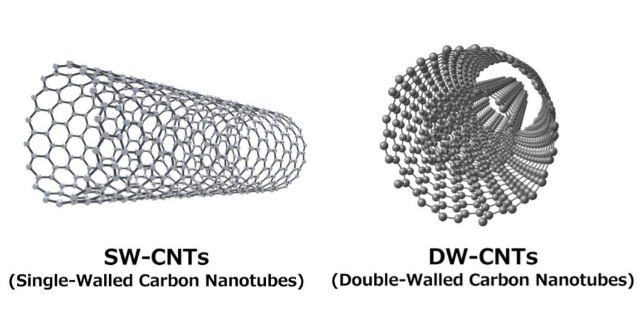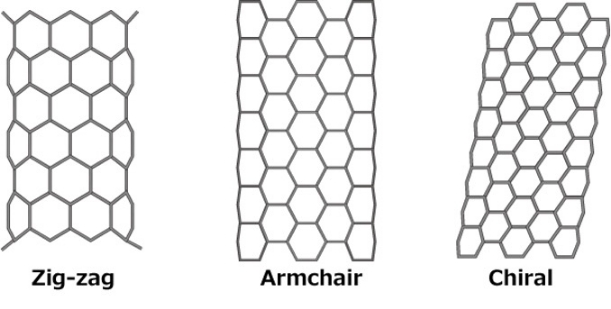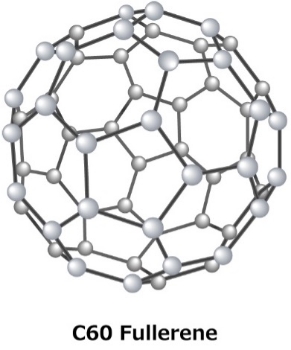DENATRON Museum / Get to know DENATRON
What is nanocarbon?
HOME > DENATRON Museum > Get to know DENATRON > What is nanocarbon?
Carbon materials are extremely diverse, ranging from charcoal, used since antiquity, to activated carbon and carbon black. It is a material that is closely knit into our lives.
There are various types of nanocarbons, such as diamond, graphene, carbon nanotubes, and fullerene, with completely different structures and properties.
For example, diamonds are not electrically conductive, but graphene is an excellent conductor.
Graphene
Graphene is a honeycomb lattice of carbon atoms joined in a hexagonal arrangement.
It is a two-dimensional material with the thickness of a single carbon atom (roughly 0.33nm). Graphite consists of multiple stacked layers of graphene.
There is a famous story of graphene being separated by using cellophane tape to peel off a layer of the graphite in a pencil lead.
Graphene is the world’s first completely two-dimensional substance.
It is known for its exceptional electrical and thermal conductivity.
It has also drawn attention for the gas barrier properties produced by its two-dimensional structure.
There are high expectations for its use in a variety of applications, such as solar cells, capacitors, lithium ion batteries, fuel cell batteries, actuators, flexible transparent electrodes, transistors, heat dissipation sheets, and barrier films.

Carbon nanotubes
Single-walled carbon nano tubes of graphene are referred to as SW-CNTs, Double-walled carbon nanotubes as DW-CNTs, and nanotubes with an even higher number of walls as Multi-walled carbon nanotubes, or MW-CNTs.

For a long time, their structure was unknown, but in 1991 Dr. Sumio Iijima discovered the carbon nanotubes while creating fullerene and their structure was described for the first time.
Generally, SWNT has a diameter of several nm and a length of several μm, but MWNT can have a diameter as large as 100nm and a length of several mm.
Graphene’s features include its electrical and thermal conductivity, and it has drawn interest for the mechanical strength provided by its tubular structure.
The electrical conductivity of SWNTs varies greatly depending on how the graphene sheet is rolled.
Its structure is determined by the chiral vector C=(n,m), which can be divided into zig-zag, armchair and chiral types.

There are high expectations for its use in a variety of applications, such as solar cells, capacitors, lithium ion batteries, fuel cell batteries, actuators, flexible transparent electrodes, transistors, heat dissipation sheets, and structural materials.
Fullerene
Fullerenes are spherical molecules with diameters of roughly 1nm that resemble soccer balls, made up of 60 carbon atoms.
Other high dimension carbon fullerenes besides C60 include C70 and C84, and they are said to have led the way to the development of nanotechnology.
While their electrical and thermal conductivity levels are not particularly high, they are known to encapsulate metal atoms within their spherical structure and demonstrate unique electrical properties.
There are hopes for their use in various applications, such as solar cells, fuel cell batteries, transistors, and diagnostic agents.

Return to list of articles
